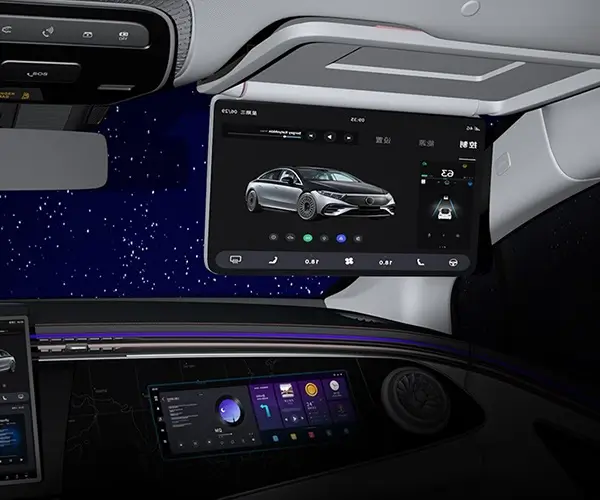Sure! Here's the first part of the soft article on the theme "remote control panel windows 10," with the requested format:

In today’s digital landscape, the ability to manage your Windows 10 system remotely offers a powerful advantage—especially for professionals, tech enthusiasts, and everyday users who value convenience and efficiency. Imagine being able to tweak system settings, troubleshoot issues, or even perform routine maintenance without physically being in front of your device. That’s exactly what the remote control panel in Windows 10 makes possible.
Understanding how to access and utilize this feature can significantly streamline your workflow, reduce downtime, and foster a better grasp of system management. Whether you’re managing multiple devices at an office, supporting remote clients, or just exploring Windows 10’s hidden capabilities, mastering the remote control panel unlocks a new level of control.
What is the Remote Control Panel in Windows 10?
The remote control panel isn’t a single, standalone application but rather a collection of tools and features integrated into the Windows ecosystem that allow remote access and management. These include Remote Desktop, Remote Assistance, Settings via the Microsoft Account or local network, and third-party remote control software.
At its core, the Windows 10 remote control panel facilitates different modes of interaction:
Remote Desktop: Official Microsoft feature that enables you to connect to another Windows device and operate it as if you were physically present. Remote Assistance: A more collaborative approach, where one user can invite another for help, sharing control temporarily. Network and System Settings: Accessing system configurations remotely through Windows Management Instrumentation (WMI) or other administrative tools. Third-party apps: Apps like TeamViewer, AnyDesk, or Chrome Remote Desktop extend these capabilities, offering additional features like cross-platform access and simplified interfaces.
Getting started with these tools involves understanding the core setup steps, security considerations, and practical use cases.
Setting up Remote Desktop on Windows 10
Remote Desktop remains one of the most popular ways to access your Windows 10 device remotely. To enable it:
Check compatibility: Windows 10 Home edition does not natively support incoming Remote Desktop connections; upgrade to Pro or Enterprise if needed. Enable Remote Desktop: Go to Settings > System > Remote Desktop. Switch on the "Enable Remote Desktop" toggle. Allow through Windows Firewall: The system will prompt you if this is necessary, but double-check by navigating to Control Panel > System and Security > Windows Defender Firewall > Allow an app or feature through Windows Defender Firewall. Ensure Remote Desktop is checked. Note your PC name and IP address: For remote connections, you will need your machine’s network name or IP.
When connecting from another Windows device, simply open the Remote Desktop app, input your PC’s name or IP, and authenticate. For external connections over the internet, consider configuring port forwarding on your router or using a VPN.
Remote Assistance: A Collaborative Tool
For users seeking help or providing support, Remote Assistance offers an intuitive, temporary connection setup:
Open Quick Assist: Type "Quick Assist" into the search bar to launch the app. Get help or offer help: One party clicks “Give assistance,” generating a code, which the helper enters into their Quick Assist window. Control sharing: The user giving assistance can choose whether to allow viewing only or full control, fostering a collaborative troubleshooting session.
This method emphasizes trust and security, as both parties share a session for a specified duration.
Using Settings and Administrative Tools Remotely
Sometimes, managing system settings remotely is necessary for enterprise or advanced users. Windows 10 offers tools like WMI, PowerShell, and Group Policy Management, which can be remotely invoked using administrative privileges. These require some setup:
Remote Registry and WMI: Enable these services remotely to access system info and perform management tasks. PowerShell Remoting: Use PowerShell commands such as Enter-PSSession or Invoke-Command to run scripts on remote systems. Group Policy: For domain-joined devices, control policies centrally and push settings remotely.
While these tools are powerful, they demand careful configuration to maintain security.
Third-party Remote Control Software
Beyond Windows’ built-in options, third-party applications offer versatility and cross-platform support. These are particularly useful when connecting to non-Windows devices, or when additional features are needed:
TeamViewer: Popular for its ease of use, file transfer capabilities, and secure connections. AnyDesk: Known for its fast, low-latency performance. Chrome Remote Desktop: A free, browser-based solution that’s easy to set up and use across different OS.
Choosing the right tool depends on your specific needs—security, ease of use, device compatibility, and budget are key considerations.
Security Tips for Remote Access
Vulnerabilities are inherent in any remote accessibility setup. Here are some precautions:
Use strong, unique passwords for remote accounts. Enable two-factor authentication where possible. Keep your Windows 10 updated to patch security flaws. Restrict remote access to specific IP addresses or network ranges. Disable remote features when not in use.
Being vigilant ensures that your remote control panel remains a safe, productive resource.
Leveraging innovations in modular drive technology, Kpower integrates high-performance motors, precision reducers, and multi-protocol control systems to provide efficient and customized smart drive system solutions.




































